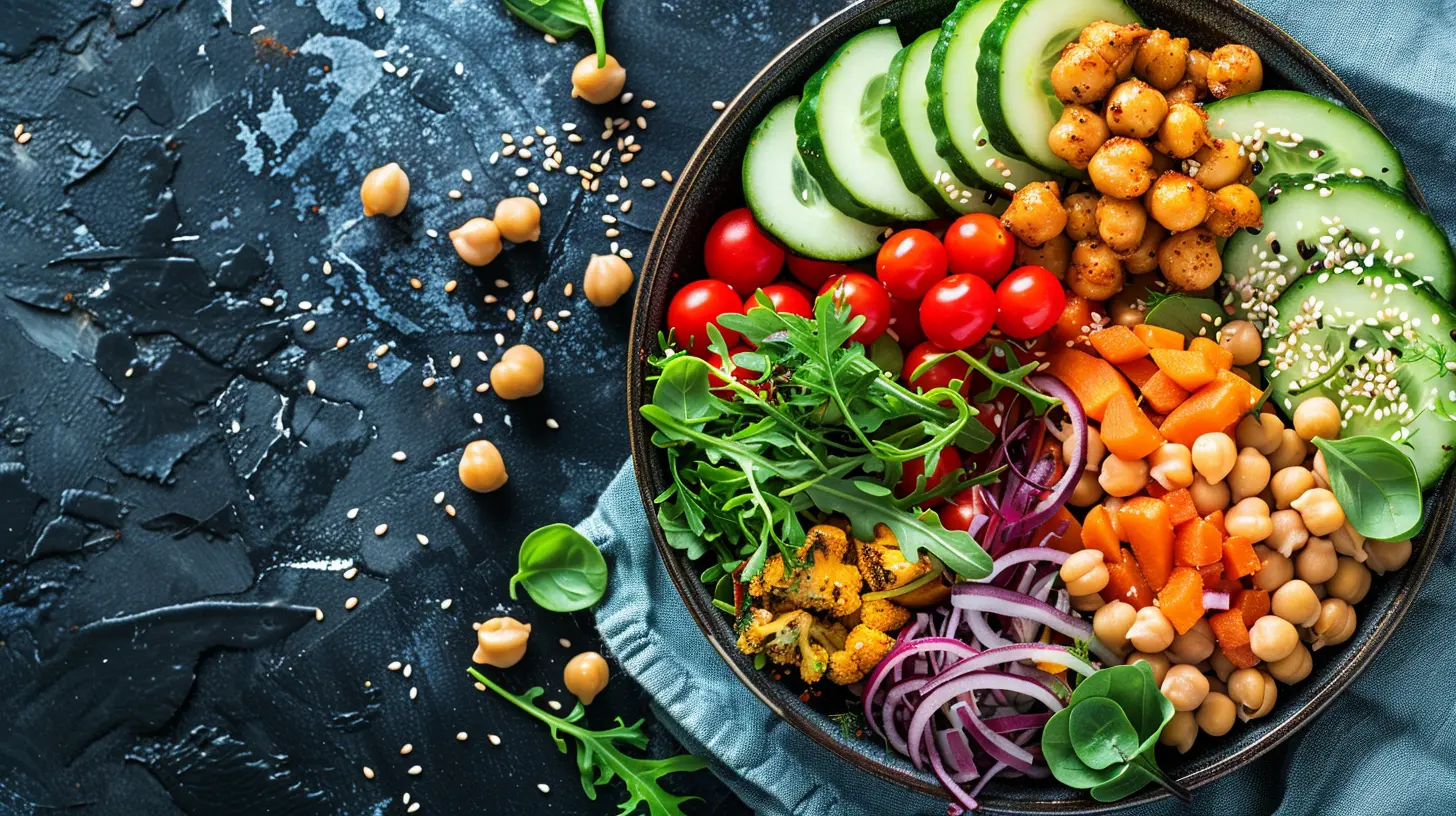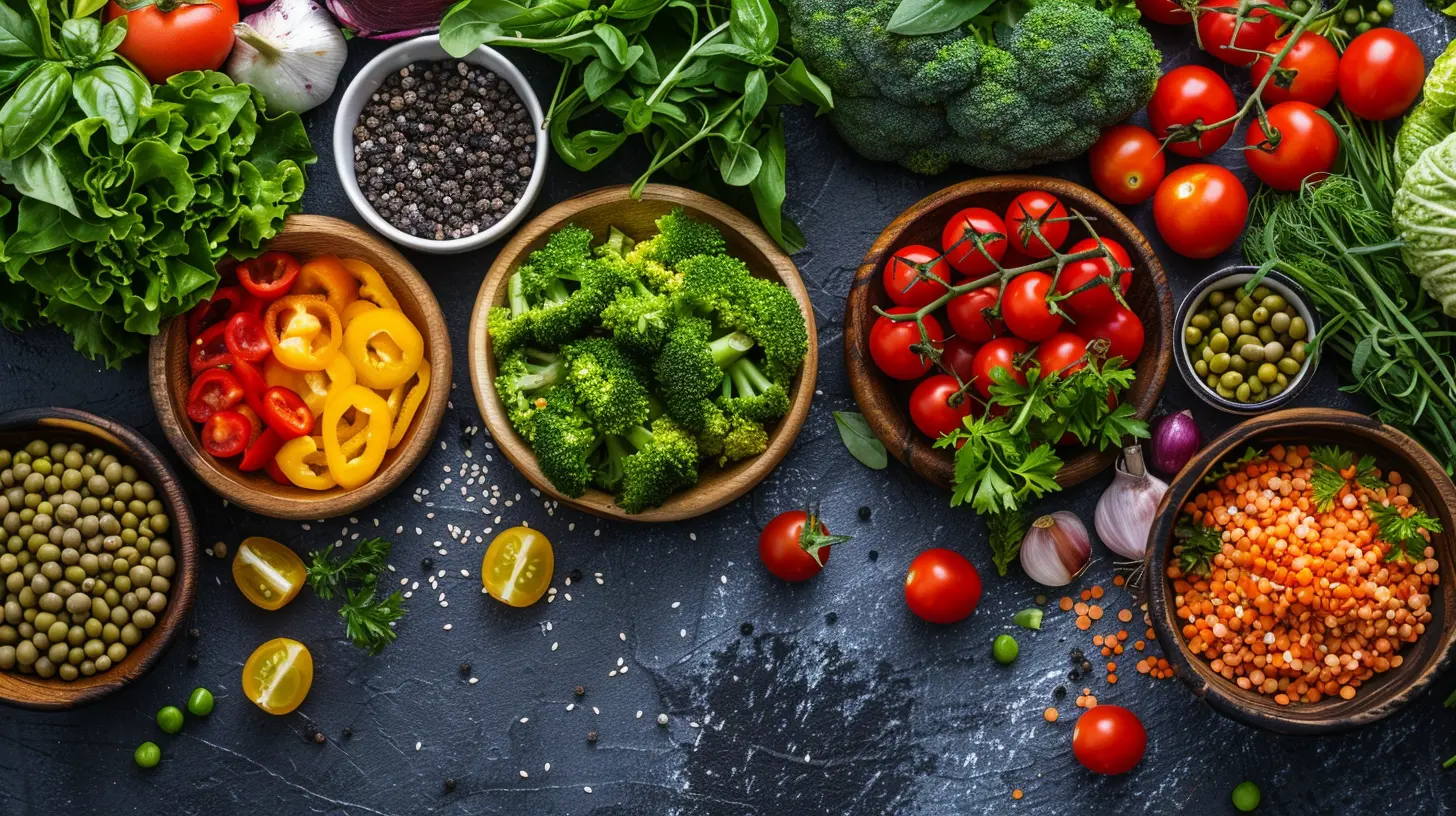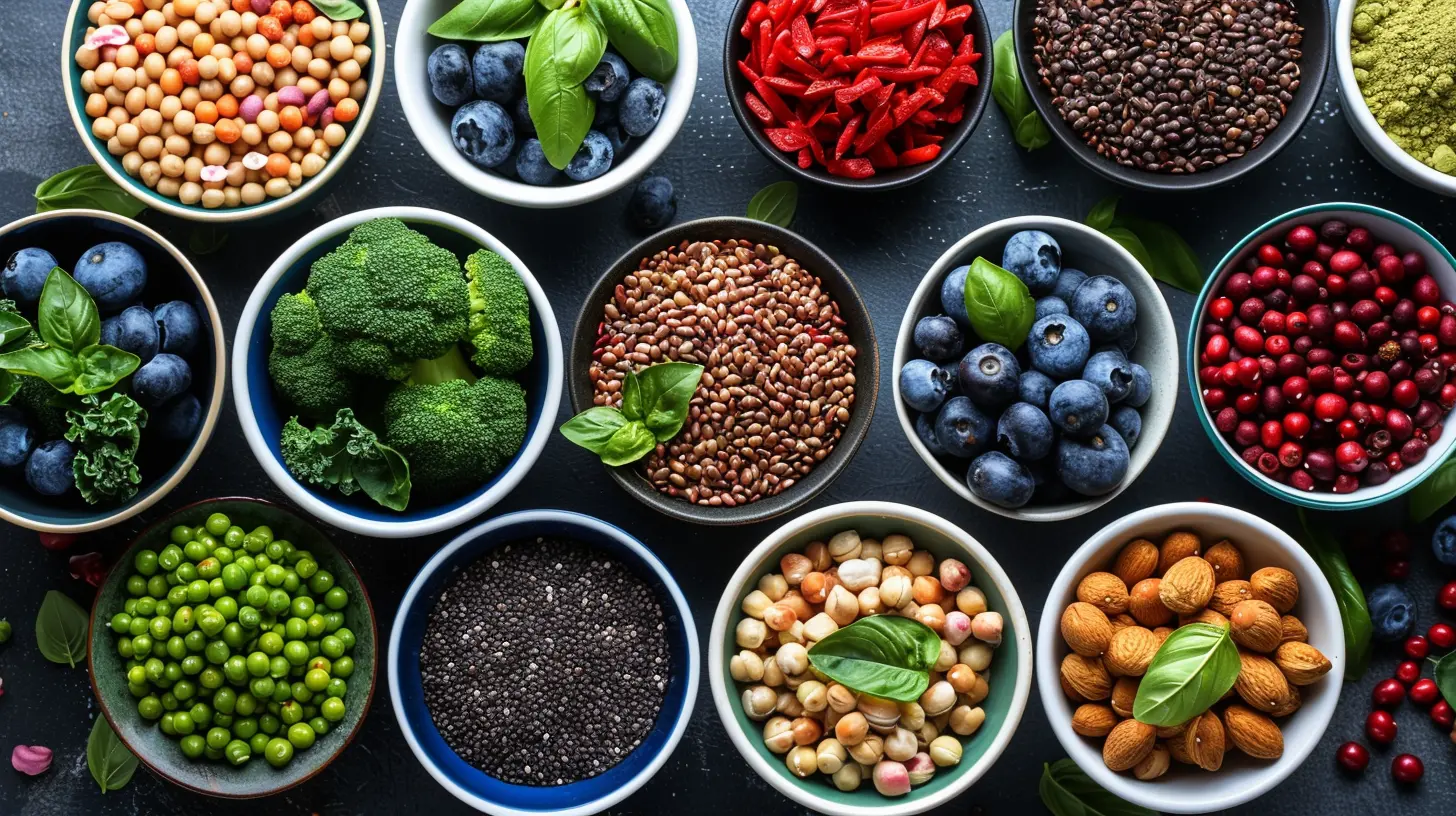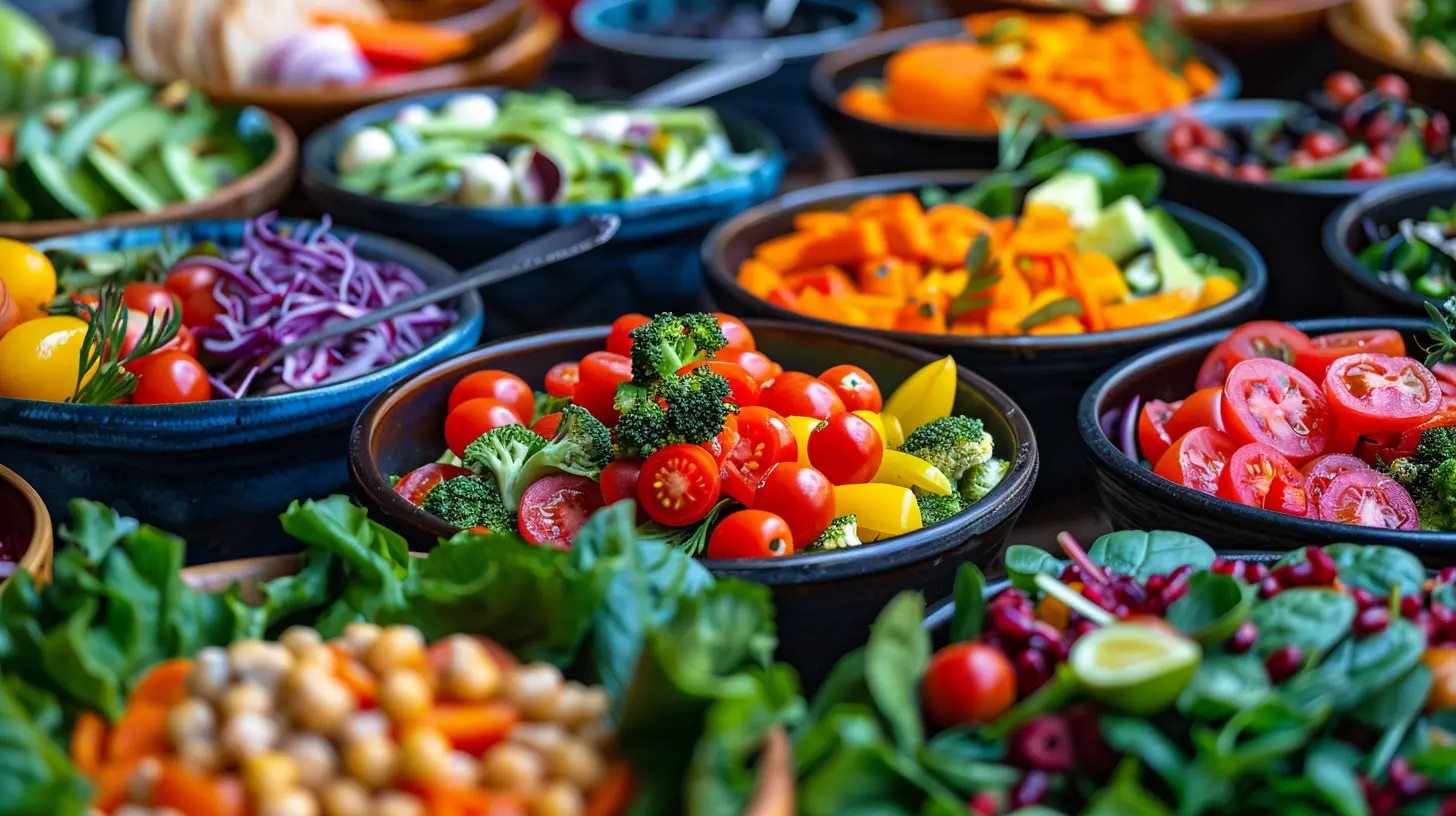The Power of Plant-Based Eating: How to Get Started
30 July 2025
Switching to a plant-based diet can be a game-changer for your health, the environment, and even your wallet. But if you've spent most of your life eating meat, dairy, and processed foods, the idea of going plant-based might seem a little daunting.
Don’t worry—I’ve got you covered. In this article, we’ll break down the benefits of plant-based eating, how to transition smoothly, and what you need to know to make it sustainable for the long run. Ready? Let’s dive in. 
What Is a Plant-Based Diet?
A plant-based diet focuses primarily on foods that come from plants:- Fruits
- Vegetables
- Whole grains
- Nuts and seeds
- Legumes (beans, lentils, chickpeas, etc.)
Unlike a vegan diet, which strictly avoids all animal products, plant-based eating can be more flexible. Some people still consume small amounts of animal products but emphasize plant foods as the primary source of nutrition. 
Why Consider a Plant-Based Diet?
So, why are people switching to plant-based diets? There are plenty of compelling reasons.1. Health Benefits
Plant-based diets are loaded with fiber, vitamins, and antioxidants while being naturally lower in saturated fat and cholesterol. Research shows that plant-based eating can:- Support heart health – It can lower blood pressure, reduce cholesterol levels, and decrease the risk of heart disease.
- Help with weight management – Whole plant-based foods are nutrient-dense but lower in calories, making it easier to maintain a healthy weight.
- Reduce the risk of chronic diseases – A plant-focused diet can lower the risk of type 2 diabetes, certain cancers, and even Alzheimer's disease.
- Improve digestion – High-fiber foods promote gut health and keep things moving smoothly.
2. Environmental Impact
Eating more plants and fewer animal products significantly reduces greenhouse gas emissions, saves water, and minimizes deforestation. In fact, studies suggest that adopting a plant-based diet is one of the most effective ways to reduce your carbon footprint.3. Ethical Considerations
For many people, plant-based eating aligns with their ethical stance on animal welfare. Factory farming often involves questionable practices, so reducing or eliminating animal products can be a way to take a stand against animal cruelty.4. Budget-Friendly and Accessible
Contrary to popular belief, eating plant-based doesn’t have to be expensive. Staples like rice, beans, lentils, oats, and seasonal vegetables are among the most affordable foods you can buy.
How to Transition to a Plant-Based Diet
Thinking about making the switch? Here’s how to do it without feeling overwhelmed.1. Start Slow
You don’t have to go 100% plant-based overnight. Start by making small changes:- Swap out dairy milk for almond, oat, or soy milk.
- Try a meatless Monday and experiment with plant-based meals once a week.
- Replace one animal-based protein (like chicken or beef) with plant-based options like beans, lentils, or tofu.
2. Focus on Whole Foods
A plant-based diet isn’t just about cutting out animal products—it’s also about eating real, nutrient-dense foods. Try to avoid ultra-processed vegan junk food and focus on whole foods like fruits, vegetables, whole grains, nuts, and legumes.3. Get Enough Protein
One of the most common concerns about plant-based eating is getting enough protein. Thankfully, there are plenty of plant-based protein sources, including:- Lentils
- Chickpeas
- Quinoa
- Tofu and tempeh
- Nuts and seeds
- Black beans and kidney beans
4. Experiment with New Recipes
One of the best things about going plant-based? The food! Experiment with different cuisines that naturally feature plant-based ingredients, like Indian, Mediterranean, or Thai dishes.Some simple meal ideas include:
- Breakfast: Oatmeal with almond butter, bananas, and chia seeds.
- Lunch: A quinoa and chickpea salad with a lemon-tahini dressing.
- Dinner: A hearty vegetable stir-fry with tofu and brown rice.
5. Be Prepared for Cravings
If you’re used to eating a lot of processed foods or animal-based meals, you might experience cravings initially. Combat them by making plant-based versions of your favorite comfort foods. Love burgers? Try a black bean or lentil burger! Miss cheese? Nutritional yeast can give you that cheesy flavor without the dairy.6. Read Labels Carefully
Many store-bought products contain hidden animal-derived ingredients. Always check labels, especially on packaged foods, to ensure they align with your plant-based goals.7. Listen to Your Body
Everyone's nutritional needs are different, so pay attention to how you feel. If you experience fatigue or cravings, you might need to tweak your diet by adding more protein, iron-rich foods, or healthy fats.
Common Misconceptions About Plant-Based Eating
1. “You Won’t Get Enough Protein”
As we discussed earlier, plenty of plant-based foods provide protein. Unless you're an elite athlete or bodybuilder, you’ll easily meet your daily protein needs by eating a balanced plant-based diet.2. “It’s Too Expensive”
Sure, fancy vegan cheeses and mock meats can be pricey, but a whole-food plant-based diet is actually one of the most budget-friendly ways to eat. Stick to staples like beans, whole grains, and seasonal vegetables to keep costs low.3. “You’ll Always Feel Hungry”
If you’re eating enough fiber-rich plant foods, you’ll stay full for longer. Focus on balanced meals that include protein, healthy fats, and carbohydrates to keep your energy levels steady.4. “Plant-Based Food Is Boring”
This couldn’t be further from the truth! From hearty grain bowls to flavorful curries and creamy pasta dishes, plant-based eating can be incredibly delicious and satisfying.Tips for Long-Term Success
1. Meal prep – Cooking in batches can save time and make it easier to stick to your plant-based goals.2. Find plant-based restaurants – Many restaurants now offer plant-based options, making dining out easier.
3. Follow plant-based influencers – There’s a ton of inspiration on social media for plant-based recipes and lifestyle tips.
4. Join a community – Whether it’s an online forum, Facebook group, or local meetup, connecting with others can help keep you motivated.
5. Be kind to yourself – You don’t have to be perfect. If you slip up now and then, don’t stress—just get back on track with your next meal.
Final Thoughts
Switching to a plant-based diet can have incredible benefits for your health, the planet, and even your budget. The key is to start small, focus on whole plant foods, and experiment with flavors and recipes you love.Remember, it’s not about perfection—it’s about progress. Whether you go fully plant-based or just incorporate more plant-based meals into your routine, every step counts.
So, why not give it a try? Your body (and the planet) will thank you.
all images in this post were generated using AI tools
Category:
Healthy EatingAuthor:

Eileen Wood
Discussion
rate this article
1 comments
Astra Gonzalez
In nature's bounty, health blooms bright, Plant-based choices bring pure delight. Nourish your soul, ignite your light.
August 20, 2025 at 3:06 PM

Eileen Wood
Thank you! Embracing plant-based eating truly enhances both health and wellness. Here's to a vibrant journey!


